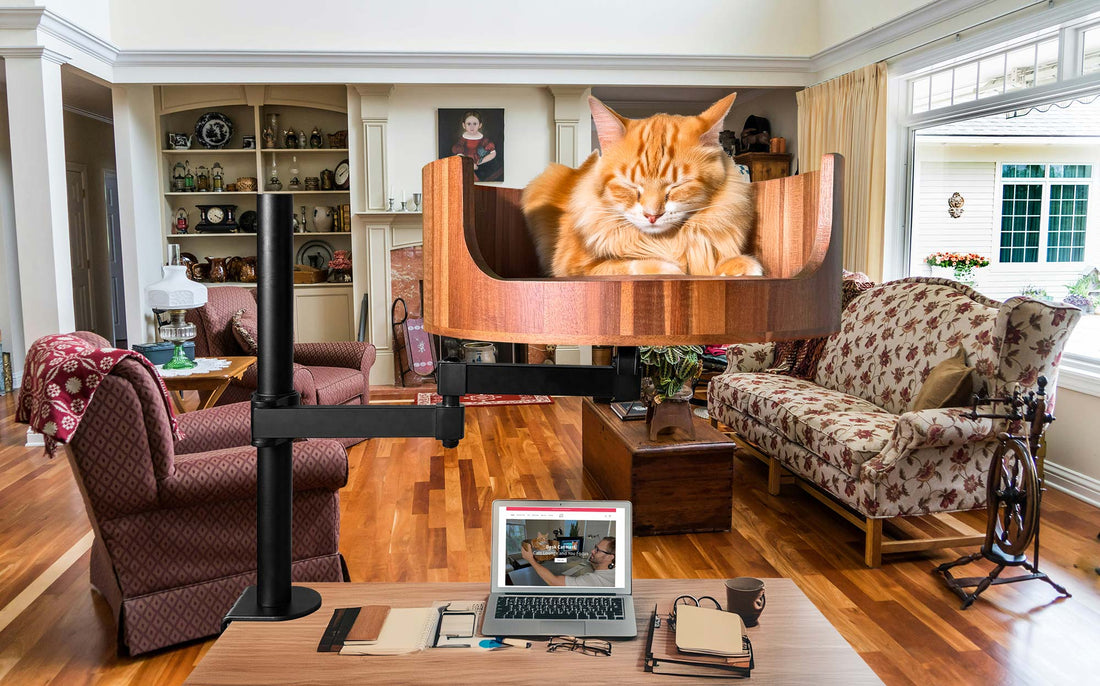
Why Do Cats Wiggle Their Tail: Understanding Feline Behavior
Share
Have you ever wondered why cats wiggle their tails? Understanding feline behavior can be complex and intriguing, and a cat's tail movements can often provide valuable insights into their feelings and intentions. From the subtle flick of a tail to the vigorous wagging, each movement can convey a different message. In this article, we will delve into the reasons why cats wiggle their tails and how to interpret their behavior.
From hunting instincts to social interactions, a cat's tail serves as a key communication tool that can reveal a lot about their mood and emotions. By examining the various tail movements and accompanying body language cues, pet owners can gain a better understanding of their feline companions and strengthen their bond with them. Whether it's a playful twitch during a game of chase or a swishing tail during moments of stress, learning to read a cat's tail can help prevent misunderstandings and improve communication between humans and their furry friends. So next time you see your cat wiggling their tail, take a moment to observe their behavior and consider what message they may be trying to convey.
1. Cats wiggle their tails as a form of communication, signaling their emotions and intentions to other animals and humans.
2. Tail wiggling can indicate excitement, agitation, playfulness, or predatory behavior, helping owners understand their cat's mood and needs.
3. Paying attention to other body language cues alongside tail movements can provide a more complete picture of a cat's state of mind.
4. Tail wiggling may also be a way for cats to release excess energy or tension, serving as a form of stress relief.
5. Understanding and responding appropriately to a cat's tail wiggling can strengthen the bond between feline companions and their owners.
Instinctual Behavior
Cats wiggle their tails as a form of instinctual behavior that dates back to their wild ancestors. In the wild, cats use their tails as a way to communicate with other animals, both within their own species and to potential threats. By wiggling their tail, cats can signal their intentions, emotions, and even their mood. For example, a cat may wag its tail rapidly when it is feeling threatened or agitated, while a slow, subtle tail wiggle may indicate curiosity or playfulness.
Communicating Emotions
Wiggling their tail is one way that cats communicate their emotions to their human companions. By observing the way a cat wiggles its tail, owners can get a better understanding of how their feline friend is feeling. For example, a cat that is excited or happy may exhibit a quick, twitchy tail wiggle, while a cat that is feeling relaxed and content may gently sway its tail back and forth.
Play Behavior
In addition to communicating emotions, cats often wiggle their tails as part of their play behavior. When cats are engaged in a game or playing with a toy, they may wiggle their tails in excitement or anticipation. This is especially common during interactive play sessions with their owners, where cats may use their tails as a way to signal their intentions or as a way to enhance their overall body language during play.
Medical Concerns
While tail wiggling is a normal behavior for cats, it is important for cat owners to be aware of any sudden changes in their cat's tail movements. Excessive or unusual tail wiggling could be a sign of an underlying medical concern, such as pain or discomfort in the tail area. If a cat's tail wiggling seems abnormal or is accompanied by other concerning symptoms, it is best to consult a veterinarian for further evaluation and treatment.
FAQs for Desk Cat Nest - Why do cats wiggle their tail?
Why do cats wiggle their tail?
Cats often wiggle their tail as a form of communication. It can indicate excitement, nervousness, aggression, or playfulness.
Should I be concerned if my cat wiggles its tail?
If your cat is wiggling its tail in a playful manner, there is typically no cause for concern. However, if the tail wiggling is accompanied by other signs of aggression or distress, it is best to observe your cat's behavior closely and consult with a veterinarian if needed.
Can the Desk Cat Nest help reduce tail wiggling in cats?
While the Desk Cat Nest can provide a comfortable and safe space for your cat to relax, play, and observe its surroundings, it may not directly impact your cat's tail wiggling behavior. It is important to understand the underlying reasons for your cat's tail wiggling and address any potential stressors or triggers accordingly.
In conclusion, providing your cat with a Desk Cat Bed can greatly contribute to reducing tail wiggling behavior. This cozy and comfortable bed offers a safe space for your cat to relax and feel secure, reducing stress and anxiety that may manifest in tail movements. Additionally, the raised edges of the bed provide extra support and comfort for your furry friend, promoting better sleep quality and overall well-being. Invest in a Desk Cat Bed today to give your cat the ultimate relaxation spot and help alleviate tail wiggling behavior.



















































